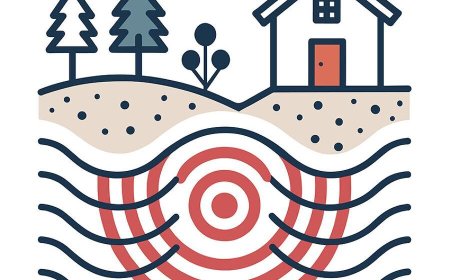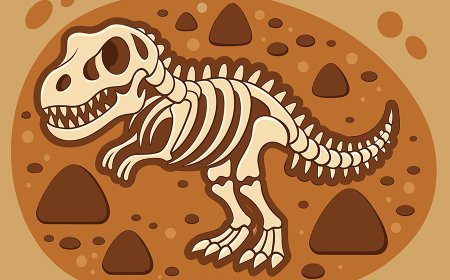Convection Currents for Students | Earth Science Guide
Learn about convection currents the movement of heat in fluids and the mantle that powers winds ocean currents volcanoes and plate tectonics in Earth science
🌟 Introduction
Have you ever watched a pot of soup boiling and noticed how the liquid seems to move in circles? That's an example of convection currents at work. Convection currents happen when heat causes fluids (liquids or gases) to move. Warmer parts rise because they are lighter, while cooler parts sink because they are heavier. This simple process is one of the most important ways heat moves through Earth's systems. Convection currents occur in the atmosphere, in the oceans, and even deep inside Earth's mantle, where they power plate tectonics, earthquakes, and volcanoes. Understanding convection helps us explain everything from weather to the movement of continents.
🔍 What are Convection Currents?
Convection currents are the circular movements that occur when heat causes fluids (like air, water, or molten rock) to move.
-
In the Atmosphere: Warm air rises and cool air sinks, creating wind and weather patterns.
-
In the Oceans: Warm water near the surface moves and mixes with cooler, deeper water, creating ocean currents.
-
In the Mantle: Hot rock deep in Earth rises, cools near the crust, and sinks again, driving the slow movement of tectonic plates.
🌍 Why are Convection Currents Important?
-
Weather: Convection currents create winds, storms, and cloud patterns.
-
Oceans: They move warm and cold water, regulating Earth's climate.
-
Geology: Convection in the mantle drives plate tectonics, forming mountains and volcanoes.
-
Energy Transfer: They are one of the three main ways heat moves (along with conduction and radiation).
🧪 Everyday Examples
-
When you boil water, the rolling motion in the pot is a convection current.
-
Hot air balloons rise because warm air inside the balloon is lighter than cooler air outside.
-
Sea breezes form when warm air over land rises and cooler ocean air rushes in to replace it.
-
Lava lamps work because heat makes the wax blobs rise and fall in a liquid, just like convection.
✨ Fun Facts
-
The mantle's convection currents move plates only a few centimeters per year-the speed of fingernail growth.
-
Jupiter's "Great Red Spot" storm is fueled by massive convection currents in its atmosphere.
-
Birds and gliders use rising convection currents of warm air, called thermals, to soar without flapping.
📌 Key Takeaways
-
Convection currents are movements caused by hot material rising and cool material sinking.
-
They occur in air, water, and molten rock inside Earth.
-
Convection explains weather, ocean currents, and plate tectonics.
-
It is a major way heat moves through Earth's systems.
🐾 Kid-Friendly Summary
Convection currents are like invisible circles that move heat around. Warm things rise, cool things sink, and this makes air, water, and even Earth's inside keep moving.
📚 Vocabulary Words
-
Convection Currents: Circular movement of fluids caused by heating and cooling.
-
Heat Transfer: Movement of heat energy from one place to another.
-
Atmosphere: The layer of gases surrounding Earth.
-
Ocean Currents: Large-scale movement of water in the oceans.
-
Mantle: The hot, thick layer of rock beneath Earth's crust.
-
Plate Tectonics: The movement of Earth's lithospheric plates.
-
Thermals: Rising columns of warm air.
-
Density: How heavy something is for its size; warm fluids are less dense.
-
Conduction: Heat transfer through direct contact.
-
Radiation: Heat transfer through electromagnetic waves.
🧠 Interactive Quiz on Convection Currents
- What causes convection currents?
A. Electricity
B. Heat making fluids rise and sink
C. Magnetism
D. Light from the Sun - Which of these is an example of convection in the atmosphere?
A. Winds and storms
B. Earthquakes
C. Volcano eruptions
D. Tides - Convection currents in the mantle cause
A. Earthquakes and plate movement
B. Lightning
C. Solar flares
D. Ocean waves - What everyday item shows convection currents at work?
A. Lava lamp
B. Book
C. Mirror
D. Shoes - Which is another way heat moves besides convection?
A. Reflection
B. Radiation
C. Diffusion
D. Absorption




















































